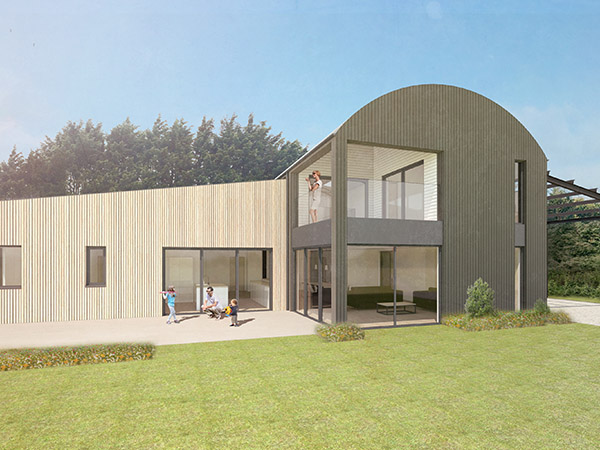Does Class Q give the best outcome for barns?
Current legislation provides a unique opportunity to convert qualifying existing agricultural structures, commonly referred to as Class Q, into residential units. Having Class Q permitted development approval, are there further opportunities? Yes, potentially under the fallback position. You can possibly unlock the potential of your underutilised or redundant agricultural buildings if the building qualifies under the Class Q Permitted Development rights criteria, creating the opportunity to transform them into attractive and sustainable homes.
Barns are explicitly excluded if located within the Class Q permitted development criteria, meaning that if they are location in Conservation Areas, Areas of Outstanding Natural Beauty, in National Parks or part of World Heritage Sites this opportunity is not available and a full application would be needed.
Class Q Permitted Development
Under Class Q guidelines, an agricultural barn can be converted up to an area of 865 sqm of agricultural buildings, allowing for the creation of a mix of up to 5 dwellings. This includes options for either larger or smaller homes, with a cumulative total residential floor space restriction of 465 sqm for larger dwellings. This flexibility creates diverse development possibilities within a single agricultural unit.
While Class Q offers significant advantages, there are certain restrictions which apply. Properties located in remote areas, listed buildings, or those within Areas of Outstanding Natural Beauty or Conservation Areas may not qualify. The approval allows for the change of use and some alterations but prohibits size-increasing works like extensions or porches, which would require a separate planning application for such additions.
The Fallback Position
It may be that a Class Q approval may not fully maximise the potential of the site or the owner’s aspirations, so is there another option to improve an opportunity?
In these circumstance, there is the opportunity to submit a new application with the fallback position that the Class Q permitted development remains. A new application allows for greater flexibility in design and landscaping, and will be considered within the usual application process.
Advantages of the Fallback Position:
Freedom in Design: Unlike Class Q, the fallback position is not constrained by the criteria around the existing building’s form and shape, allowing great flexibility of design, potentially better site utilisation and more attractive surroundings.
Design options. Fallback position applications can include alterations to external works and ground levels, not permissible under Class Q, enhancing the building’s integration into its setting to fulfil the owners personal property requirements.
Potential Repositioning. An application may allow for the repositioning a new building on the site, providing clear enhancement possibilities, potentially to benefit from easier access, a sunnier aspect and even enjoy possible views.
Larger Building Area. The new building could be planned for a greater area than approved under Class Q, subject to local authority evaluation.
Flexibility for timing. The planning approval under the fallback position allows a 3-year window to commence construction, providing flexibility in project timelines.
VAT Benefits
While VAT on the conversion of agricultural buildings is reduced to 5%, demolishing and building a new home incurs no VAT on build costs, creating a material financial benefit.
Summary
While Class Q offers a streamlined path for agricultural building conversions, the fallback position provides a strategic alternative for potentially maximising development potential. Successful approvals increasingly recognise the legitimacy of this fallback position as a material consideration in planning decisions.
Property development is rarely simple or totally straightforward. A Class Q approach requires compliance with prescribed criteria but is somewhat restrictive, dictated by the original agricultural building. A constructive approach could be through the fallback position, providing a route to improve upon an existing Class Q planning permission.
We are experienced in strategic planning, so call us to discuss options for your barn. To achieve the best outcome, the route is not always easy or straightforward but the outcomes can be worth the effort and inspirational. Let us tell you about your options and possabilites.
Peregrine Mears Architects 01271 377 776
